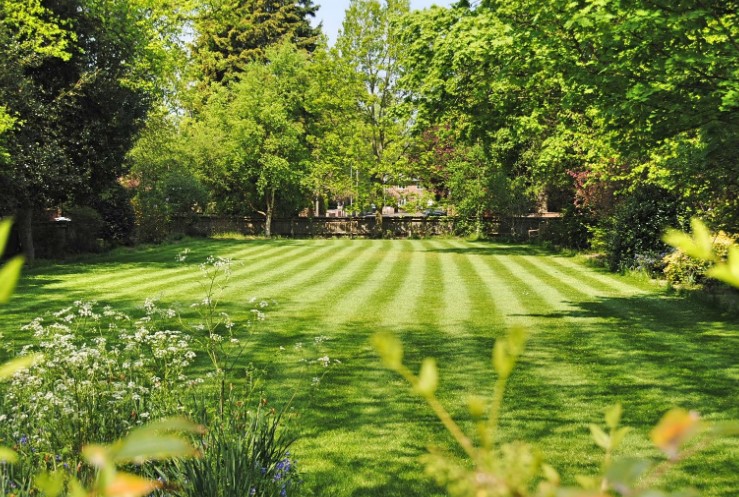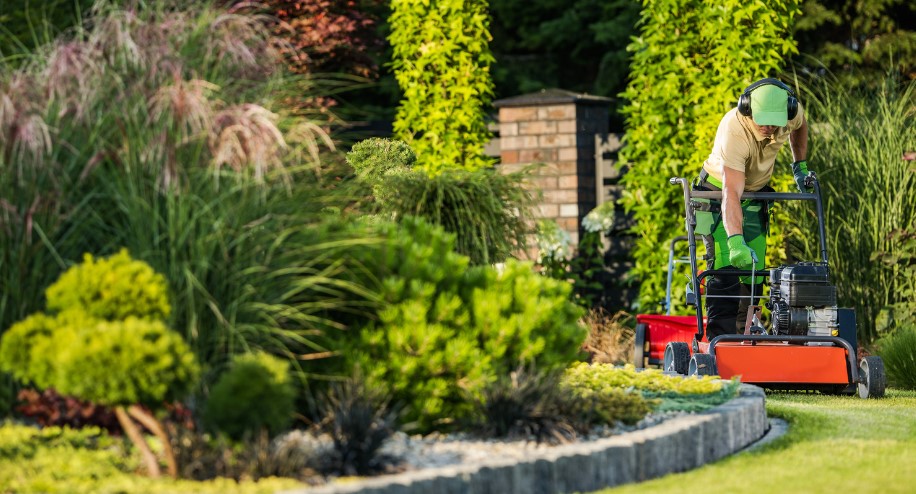A well-maintained lawn is the heart of any garden. In the UK, the changing seasons bring unique challenges, but by following a month by month lawn care calendar uk , you can keep your lawn healthy, green, and vibrant all year round. Below, I’ll guide you through seasonal tasks, blending practical tips with a manageable routine to ensure your lawn thrives.
Month-by-Month Lawn Care Calendar for the UK
January – Winter Rest and Light Maintenance
January is a quiet month for lawn care, as the grass is dormant. However, light maintenance ensures your lawn stays in good shape for spring.
- Keep the lawn free of debris, such as leaves, branches, and twigs.
- Avoid walking on frosty grass, as it can damage the blades and leave bald patches.
- If weeds are visible, apply a spot weed treatment using strongest weed killer, but avoid overloading the lawn with chemicals.
February – Early Preparation for Spring
As February progresses, the lawn begins waking up from its winter slumber. You can start preparing it for the active growing season.
- Inspect for moss caused by winter dampness and apply a moss killer to get rid of moss in lawn.
- Begin light mowing on dry days, but keep the mower blade high.
- Check for soil compaction in problem areas; you’ll need to aerate these spots next month.

March – The Start of Lawn Recovery
March signals the start of spring, and it’s time to focus on reviving your lawn after winter.
- Aerate the lawn to improve drainage and relieve compaction. Use a garden fork or aerator to create small holes.
- Apply a balanced spring fertiliser to encourage fresh, green growth.
- Perform the first mow of the season, ensuring the mower blade is still set to a high level. Avoid scalping the grass. Learn how to cut grass with a lawn mower with us.
April – Weed, Feed, and Overseed
April is a crucial month for promoting thick and healthy growth.
- Apply a combined weed and feed product to tackle emerging weeds while nourishing the grass.
- Overseed bare patches with grass seed to improve lawn density. Rake lightly to ensure good seed-to-soil contact.
- Keep an eye out for pests like leatherjackets and chafer grubs, as they can damage grass roots.

May – Regular Mowing and Moisture Management
In May, the lawn enters its peak growing phase and requires more frequent care. In UK there are legal time to mow lawn.
- Mow weekly, but avoid cutting the grass too short. A height of 2.5–4cm is ideal.
- If dry spells occur, water the lawn deeply once or twice a week rather than daily.
- Continue addressing any weeds with spot treatments to prevent them from spreading.
June – Maintain Peak Lawn Health
With summer in full swing, June is the month to enjoy your lawn while keeping it looking its best.
- Apply a slow-release summer fertiliser to provide consistent nutrients during the warmer months.
- Keep the lawn hydrated during extended dry periods, watering early in the morning to reduce evaporation.
- Trim the edges of your lawn for a neat and polished appearance.
July – Protect Against Heat Stress
July’s warmer weather can stress your lawn if not properly managed.
- Water deeply during heatwaves, focusing on early mornings or evenings to conserve moisture.
- Avoid mowing during extremely hot weather, as it can weaken the grass.
- Monitor for signs of fungal diseases like red thread or brown patches, and treat them promptly with appropriate lawn care products.
Get to know the best time to mow your lawn for perfect lawn care.

August – Prepare for Autumn
August is the perfect time to address any mid-summer issues and prepare for the cooler months ahead.
- Perform light aeration to improve airflow and water absorption.
- Remove any visible thatch buildup by raking or scarifying lightly.
- Maintain regular mowing, but avoid cutting the grass too short to prevent stress.
September – Scarify and Feed
September is a recovery month for your lawn after the summer heat, and it’s ideal for scarifying and feeding.
- Scarify the lawn to remove moss and thatch. Use a lawn scarifier or rake vigorously.
- Overseed thin areas to encourage dense, healthy growth before the cooler months.
- Apply an autumn fertiliser rich in potassium to strengthen the grass for winter.
October – Final Prep Before Winter
October is your last chance to prepare the lawn before growth slows down.
- Perform the final mow of the year, raising the mower blade to protect the grass like hebes from frost damage.
- Keep the lawn clear of fallen leaves and debris to prevent mould and pests.
- Apply a light top dressing (a mix of sand and soil) to improve soil structure and drainage.

November – Keep it Clean and Protected
In November, focus on keeping the lawn tidy and free from frost damage.
- Regularly remove fallen leaves using a rake or leaf blower.
- Avoid heavy foot traffic, especially on frosty mornings, to prevent compacting the soil.
December – Let Your Lawn Rest
December is a month of rest for your lawn, requiring minimal maintenance.
- Inspect for signs of moss or pests and plan treatments for the new year.
- Remove any debris to keep the lawn clean and healthy.
- Avoid mowing entirely unless absolutely necessary, and only if the weather is mild and dry.
Key Lawn Care Tips Throughout the Year
1. Mowing Tips by Season
- Spring: Begin with high blade settings and lower gradually as the grass grows.
- Summer: Mow weekly, but don’t cut the grass too short during hot weather.
- Autumn: Raise the blade height to protect the grass from stress.
- Winter: Avoid mowing unless the weather is dry and the grass is actively growing.
2. Aerating and Scarifying
- Aerating: Relieves soil compaction and improves drainage. Best done in spring and autumn.
- Scarifying: Removes thatch and moss to allow better airflow and water penetration. Scarify in September or October.

3. Feeding and Fertilising
- Use a nitrogen-rich fertiliser in spring to encourage growth.
- Apply a slow-release fertiliser in summer for consistent feeding.
- Switch to an autumn fertiliser high in potassium to prepare for winter.
4. Dealing with Common Problems
- Moss: Apply a moss killer in late winter or early spring.
- Weeds: Use a weed and feed product or apply spot treatments as needed.
- Pests: Treat for chafer grubs and leatherjackets in spring or autumn.
Conclusion
By following this month by month lawn care calendar uk, you’ll ensure your lawn stays healthy, green, and inviting year-round. Regular maintenance, from mowing and fertilising to scarifying and aerating, plays a vital role in achieving a stunning lawn that’s the pride of your garden.
Start implementing these tasks today, and enjoy a beautiful, thriving lawn every season!
FAQs About Lawn Care in the UK
1. How often should I mow my lawn during summer?
Mow once a week or every 5 days during peak growth. Avoid cutting the grass too short to retain moisture.
2. When should I scarify my lawn?
Scarify in September or October to remove moss and thatch.
3. Can I use the same fertiliser all year?
No, you’ll need specific fertilisers for each season. For example, spring and summer require nitrogen-rich products, while autumn fertilisers are potassium-based.
4. How can I prevent moss from returning?
Keep your lawn well-aerated, avoid overwatering, and apply a moss killer when needed to prevent from moss.


0 Comments